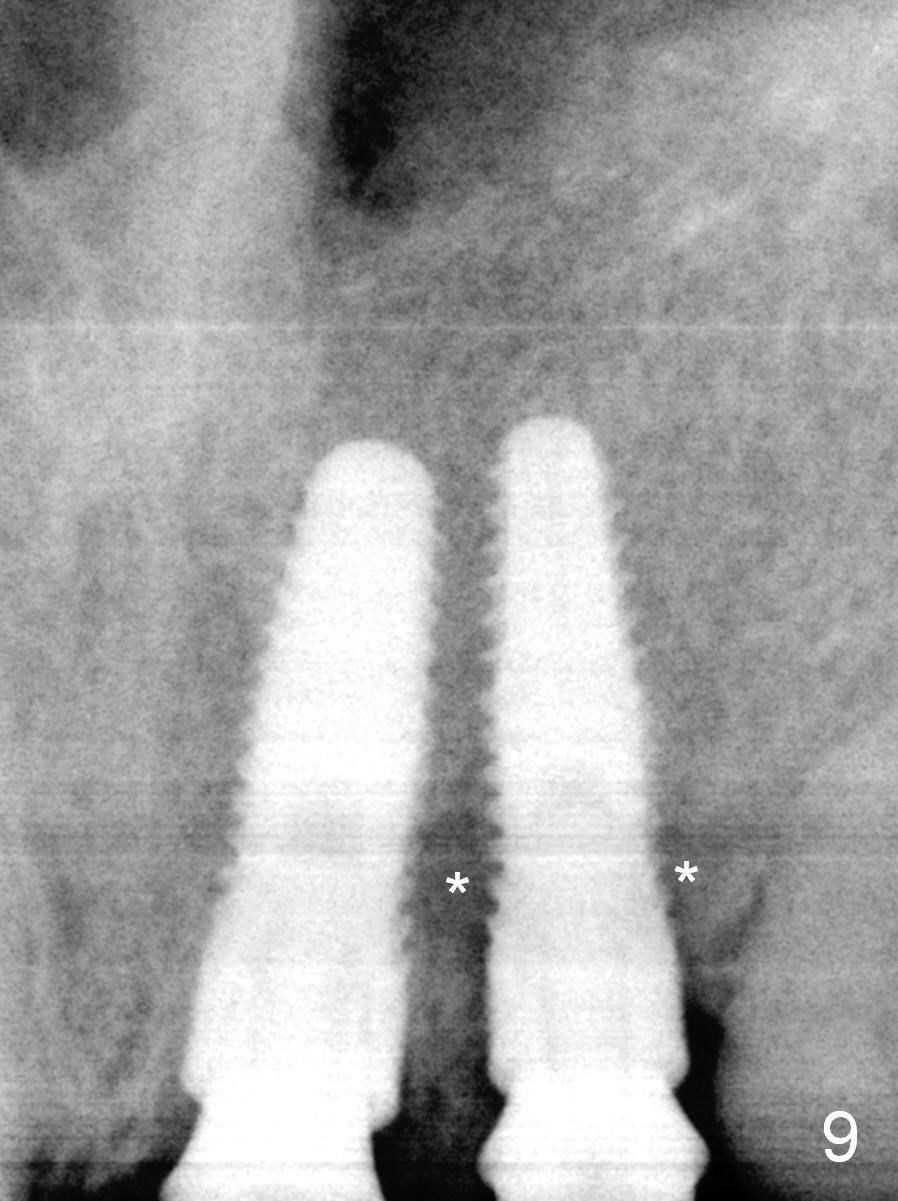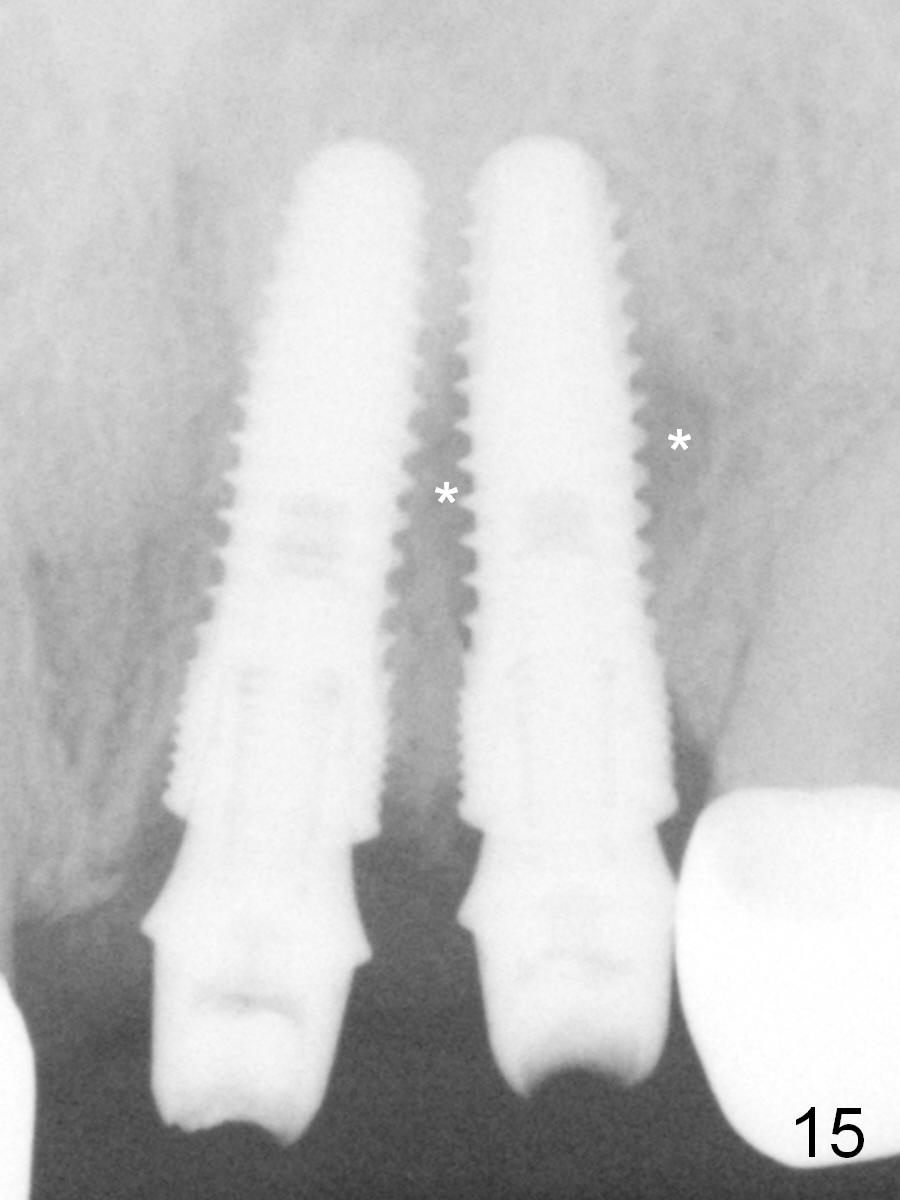.jpg)



.jpg) |
 |
 |
 |
Fig.5: Immediate implants (4.5x14 and 4.1x14 mm) are placed at the sites of #9,10, respectively. The insertion torque is between 50 and 60 Ncm. Restorative abutments (4.8x4(2) mm (2 stands for the height of the cuff of the abutment) are placed with hand tightening.
Fig.9: One month 12 days postop, bone apparently heals normally around the implants. The provisional is removed for final impression so that the provisional will not be dislodged so easily. When the abutment at #9 is being torqued at 35 Ncm, it turns slightly. In contrast, the abutment at #10 spins while being torqued. When un-torqued, the abutment is removed with the implant together. A larger implant (4.5x14 mm) is immediately placed with insertion torque at 35/40 Ncm (Fig.12). The same abutment returns to the site of #10 with hand tightening. The abutment at #12 is not torqued. The final impression is taken as planned. Retrospectively, there is radiolucency around the implant at #10 (*). It appears that primary stability has reduced from 50/60 to <35 Ncm one month postop at #10. It may be alright to leave the initially spinning implant in place.
Six months postop, the splinted crowns at #9 and 10 dislodge. There is sign of chronic infection buccal to the implants at #9 and 10 (Fig.13 arrowheads, Fig.15 *).
Return to Trajectory
Xin Wei, DDS, PhD, MS 1st edition 06/07/2015, last revision 01/19/2018